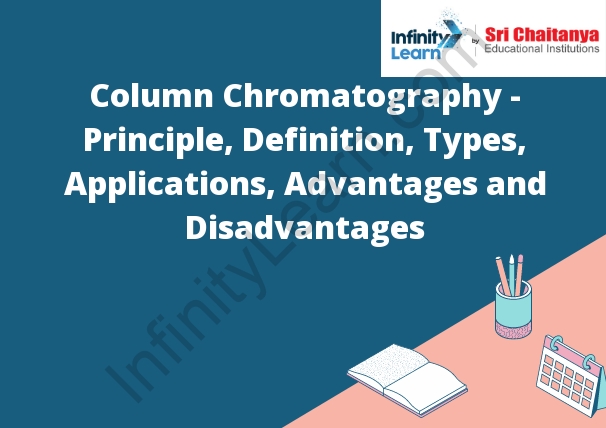Table of Contents
Column Chromatography
Column Chromatography – Definition:
Column chromatography is a separation technique based on the principle of differential partitioning of compounds between a stationary phase and a mobile phase. It is commonly used in chemistry for the purification and separation of mixtures of chemical compounds.
The separation is influenced by various factors such as the nature of the stationary phase, the composition and flow rate of the mobile phase, and the specific properties of the compounds being separated (e.g., polarity, size, charge).
Column chromatography is a versatile technique used in many areas of chemistry, including pharmaceutical research, natural product isolation, and analytical chemistry. It allows for the purification and isolation of specific compounds from complex mixtures by exploiting their different interactions with the stationary and mobile phases.

Types of Column Chromatography
The three types of column chromatography are:
1. Adsorption chromatography
2. Ion exchange chromatography
3. Affinity chromatography
Principle of Column Chromatography
The principle of column chromatography is the same as that of paper chromatography. A small amount of the sample is placed on a strip of paper or in a column, and a solvent is then drawn up the paper or column. The components of the sample are then separated by how quickly they move through the solvent.
A mixture of compounds is placed on a column and a solvent is passed through the column. The compounds in the mixture are separated according to their relative affinities for the solvent. The more affinity a compound has for the solvent, the faster it will move through the column.
Application of Column Chromatography
- Column chromatography is often used to purify small molecules.
- In this application, a small molecule is dissolved in a solvent and then loaded onto a column.
- The column is packed with a solid support, such as silica gel, and the solvent is allowed to flow through the column.
- The small molecule is then eluted from the column by changing the solvent.
Disadvantages of Column Chromatography
- Column chromatography is not as efficient as other types of chromatography, such as gas chromatography.
- Column chromatography also takes longer to complete than other types of chromatography.







